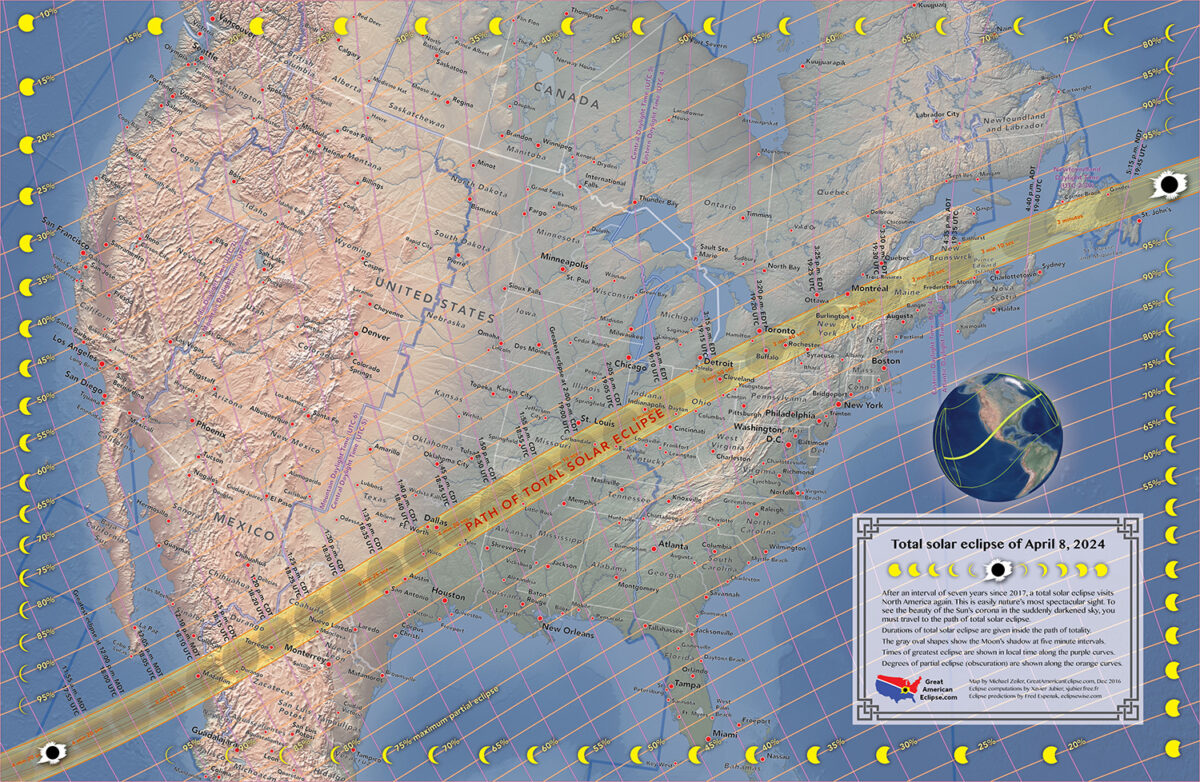This past Saturday was the first of two solar eclipses that will cross the United States within six months of each other. This one was an annular eclipse, so named because the moon is not quite big enough to completely cover the sun. This results in a “ring of fire” around the moon. I was fortunate to see the last annular eclipse in the United States on 20 May 2012 from the state of Utah.
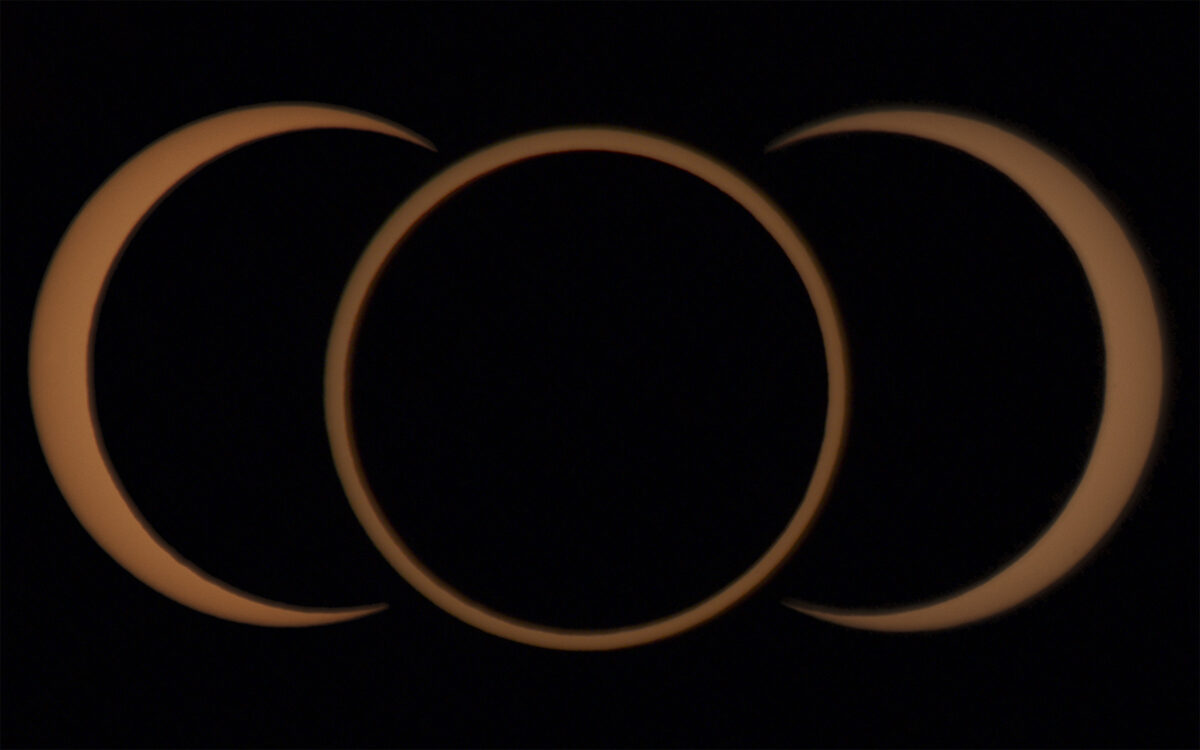
This time I was not as fortunate and could not make the trip to the southwestern United States where the path of annularity was located. Instead I had to settle for the partial eclipse that would be visble locally. On Friday it became apparent that seeing the eclipse from Harris County would be difficult due to forecasted 60% cloud cover. An approaching cold front from the west would thin the clouds but it would not arrive until after the eclipse was over. However to the west in Birmingham there was only 26% cloud cover forecasted. Those were much better odds so I began searching for a place to observe from.
During my search I discovered that the NWS Birmingham office was having an open house during the eclipse. One of the events they listed was a weather balloon launch. This piqued my interest because I have watched several of their ballons burst and also recovered several of them. Seeing a launch would complete the circle. The only question was would they allow me to set up my telescope to allow everyone to see the eclipse? After some correpondence I was given permission and the trip was set.
The Eclipse
The equipment I used to capture the eclipse consisted of:
11″ Celestron EdgeHD Schmidt-Cassegrain telescope with a Celestron EdgeHD .7x focal reducer lens
Orion Atlas AZ/EQ-G mount with upgraded Sky-Watcher AZ-EQ6 Pro electronics
Astrozap Baader solar filter
Canon EOS R6 Mark II camera
This setup yielded ~1953mm focal length at f/7. I used a shutter speed of 1/640 sec and ISO 100.

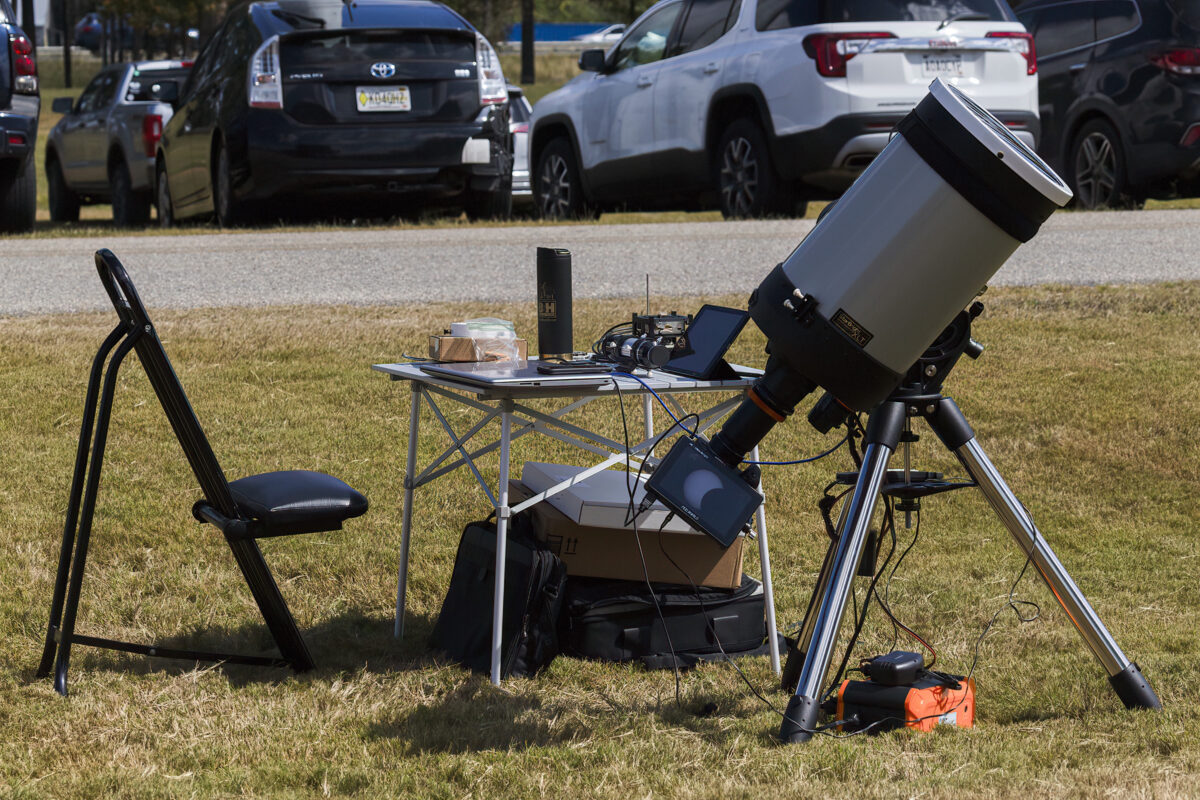
The sky was still cloudy when the eclipse began at 10:38am. It would take another 50 minutes for the clouds to break up enough to begin capturing some images. Over the course of the next two hours and fifteen minutes scores of people stopped by to see the eclipse and take photos of this rare event.
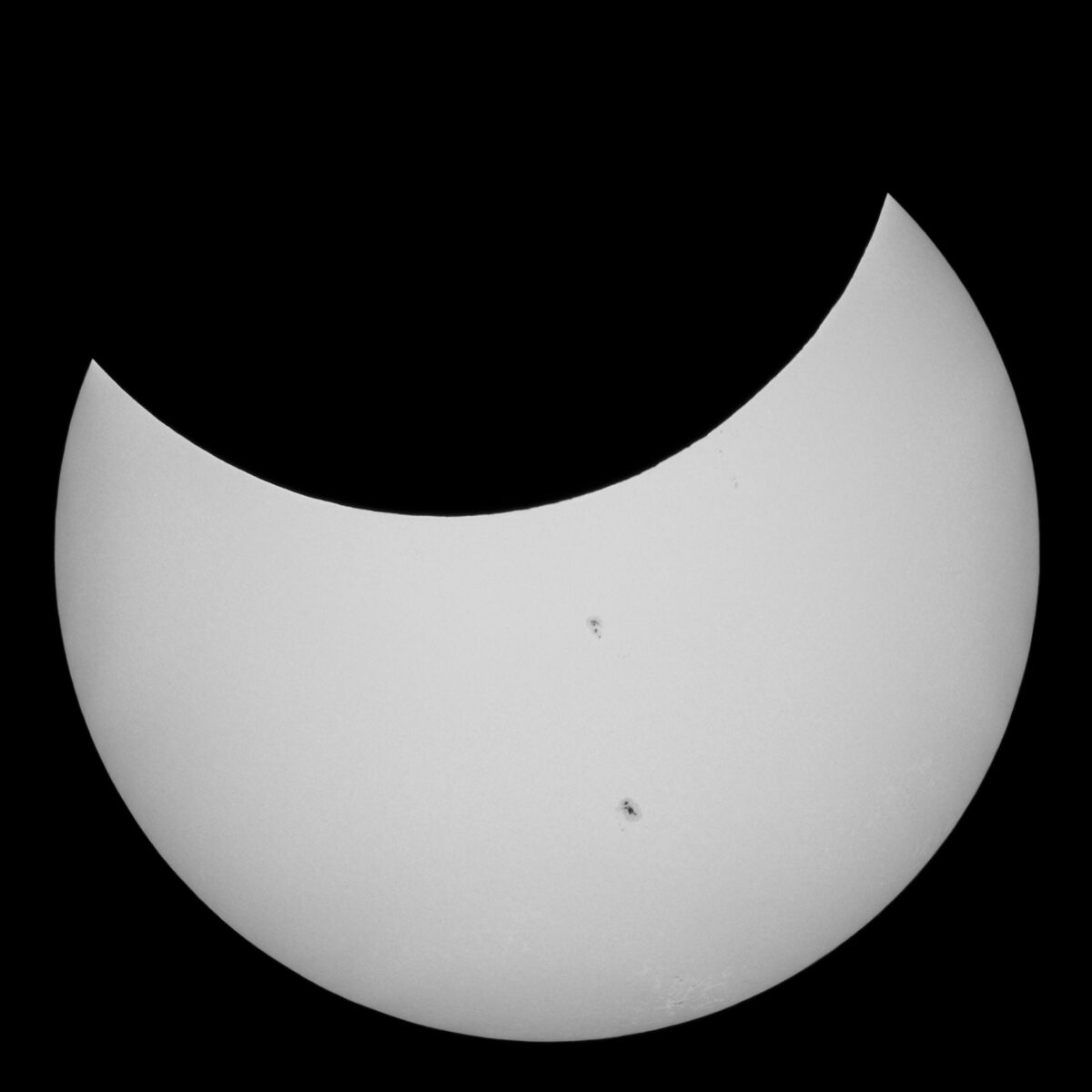
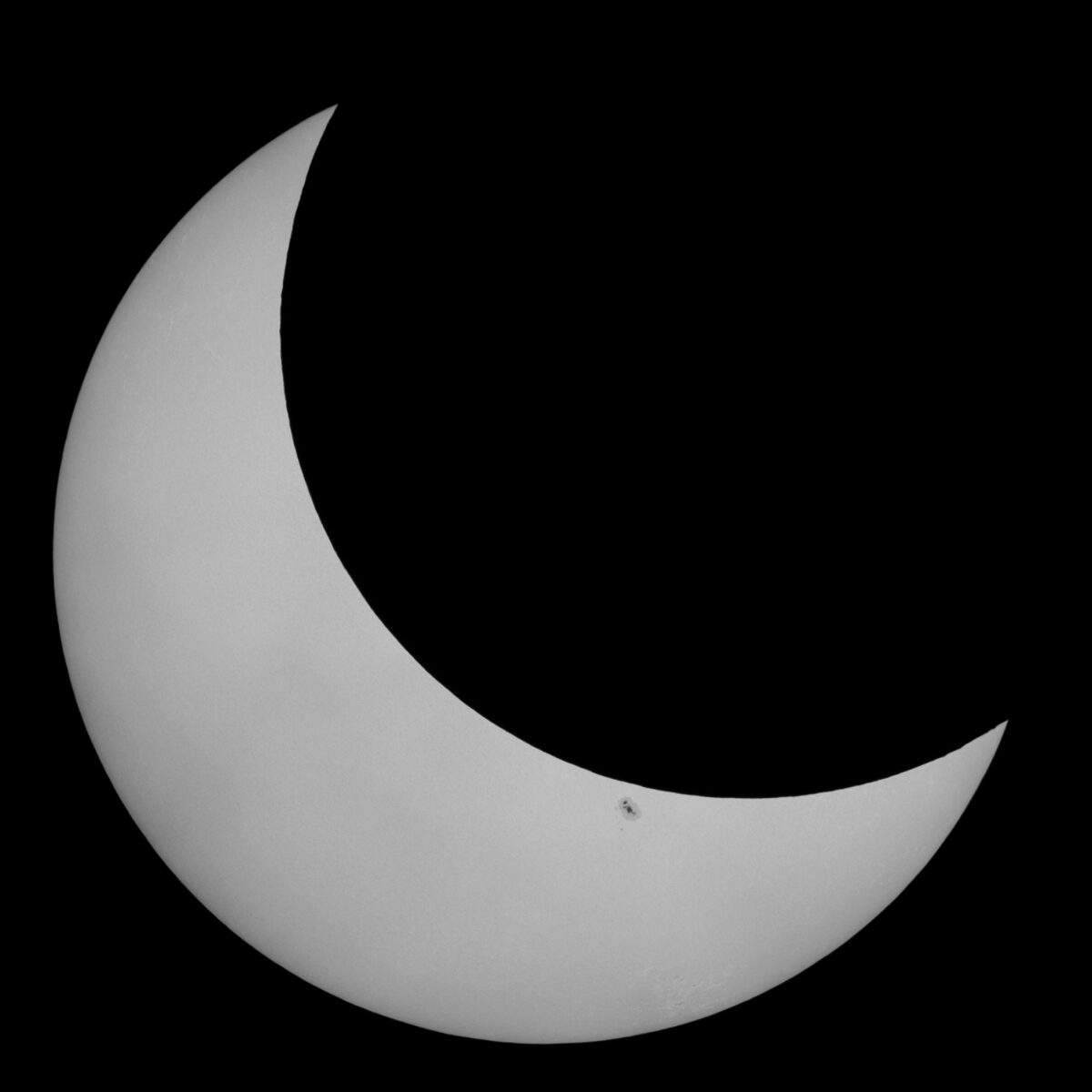
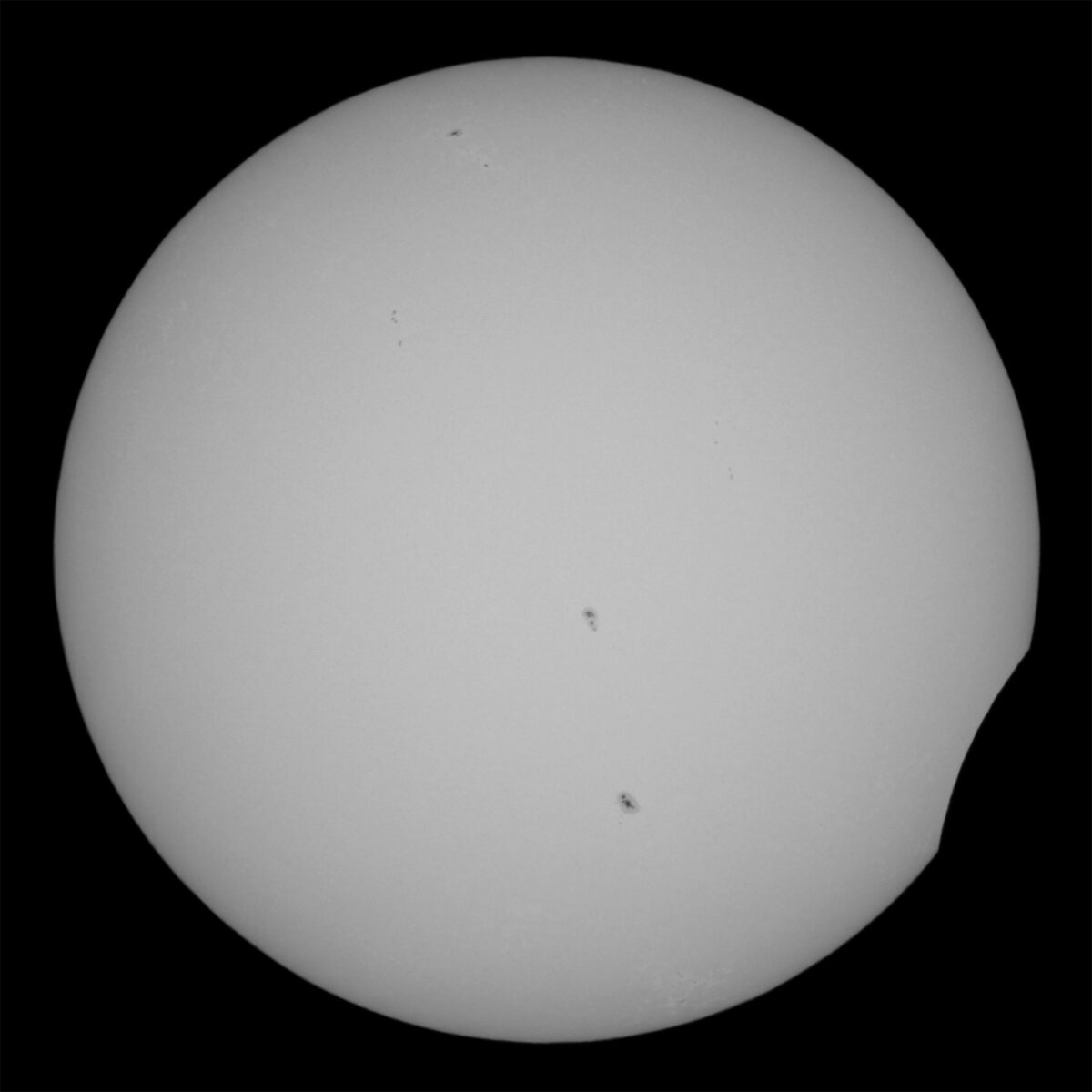
I did capture something odd around 12:55pm shortly after the two largest sunspots reappeared.
This is a video I recorded of the 14 October 2023 annular solar eclipse from the NWS Birmingham office during their annual open house. It starts out with the real time solar transit of the object. This is followed by real time tracking of the object. The last segment tracks the object at 5% speed.
…
I’m not entirely sure what this is. Satellites, aircraft, or even high flying birds would be in focus. This appears to be out of focus which would place it closer to the telescope. There appears to be a V-shape in the penumbra portion of the shadow which rotates counterclockwise from roughly four o’clock to the 11 o’clock position at which point the object becomes elongated.
My speculation is this is something small being blown by the wind, perhaps a bug with the V-shape being the back legs. In the real time tracking the penumbra shadow starts flickering like flapping wings. It does not move parallel across the SCT corrector plate but rather at an angle, getting further away as it moves down the screen.
Youtube description
Weather Balloon Launch
Launch occured at 12:15pm.
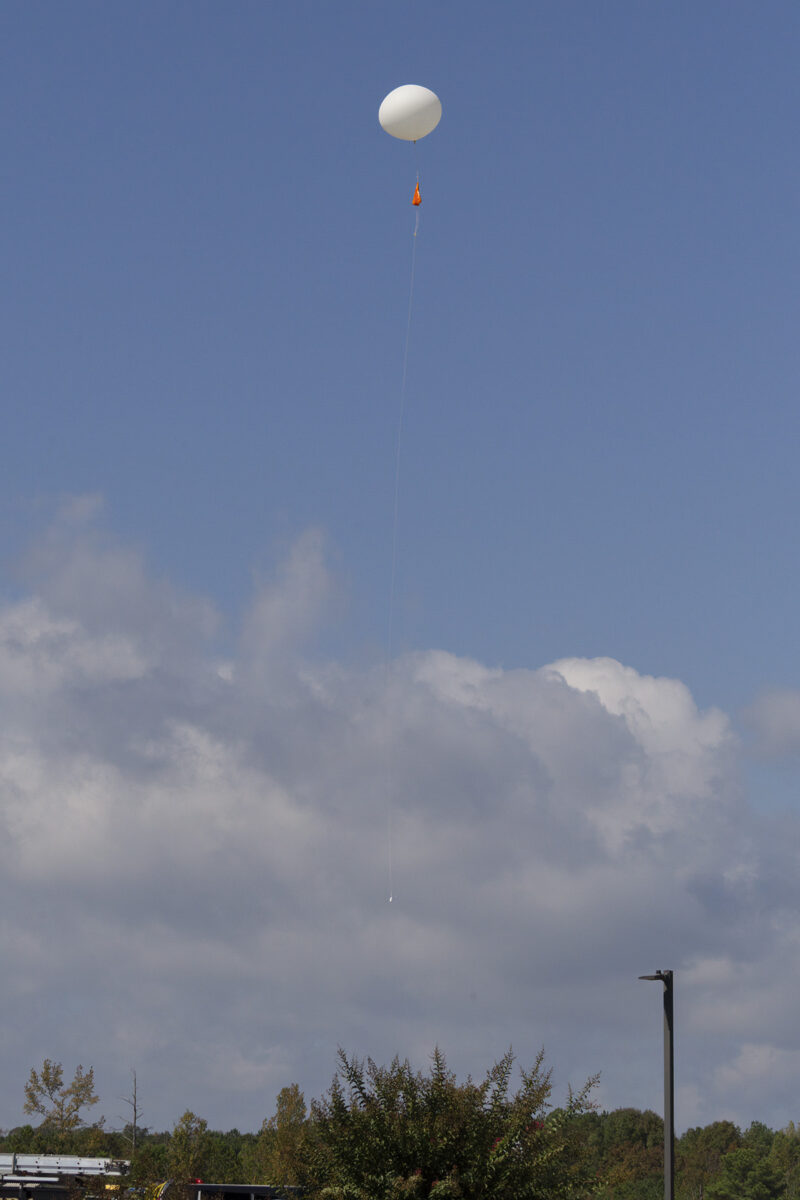
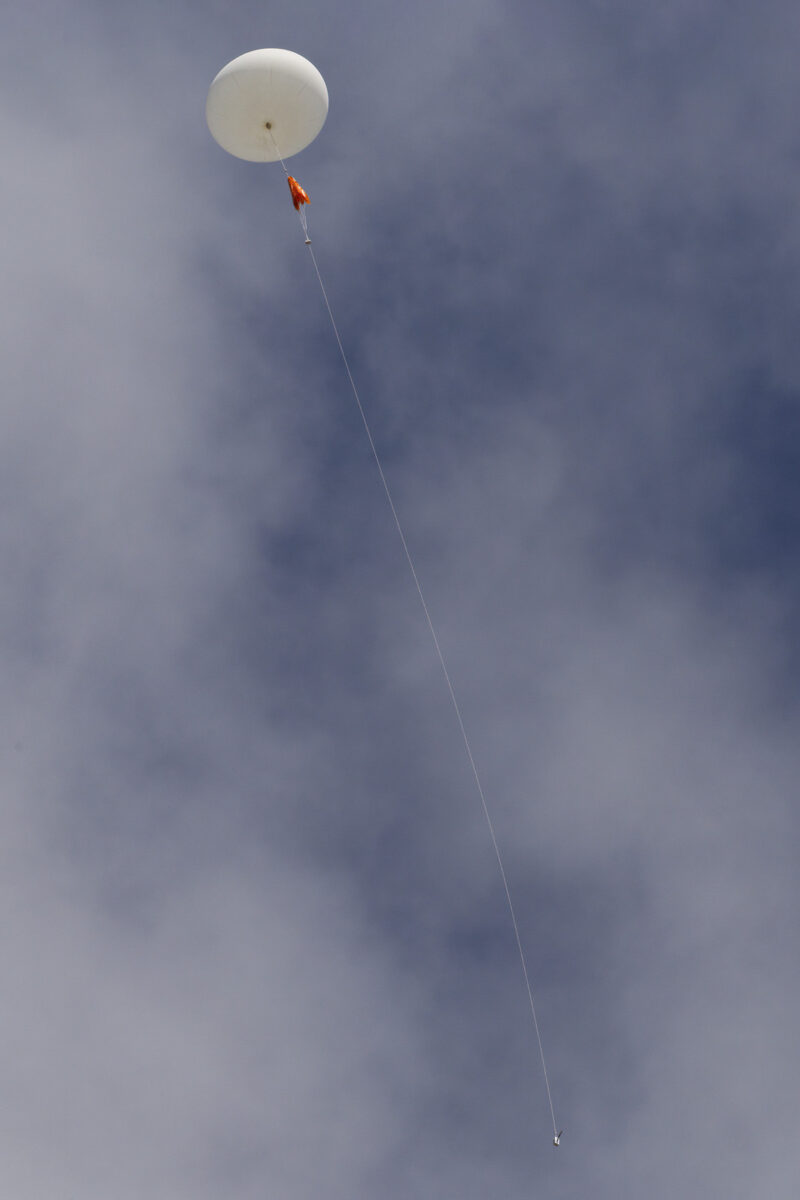
I was able to track the radiosonde with my portable Sonde Tracker³ (you can see it and the antenna sitting on the table next to the telescope). Here’s the groundtrack for the first couple minutes of flight along with the entire Skew-T plotted by the Radiosonde Auto-RX software (for the DFM radiosondes it only plots the temperature and wind speed/direction):
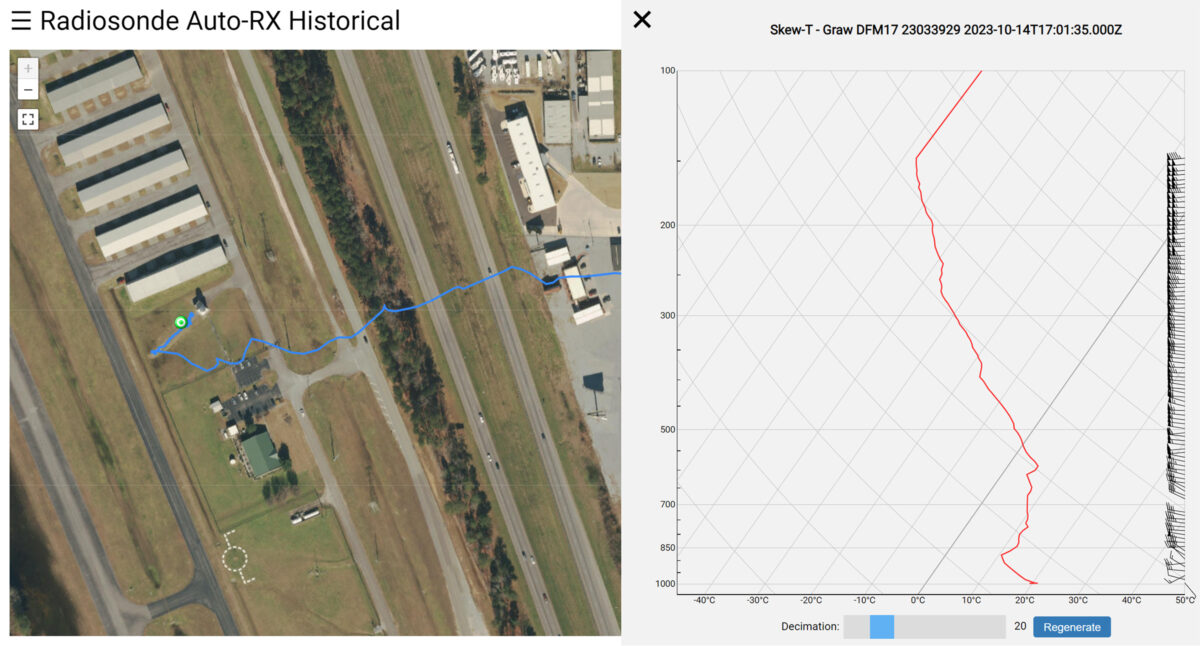
The balloon burst at 107,293 feet (32,703 meters) just west of Roanoke, AL. The predicted landing zone was northwest of Greenville, GA in Meriwether County. I did a drone search of the landing zone (a forestry management area) but found nothing.
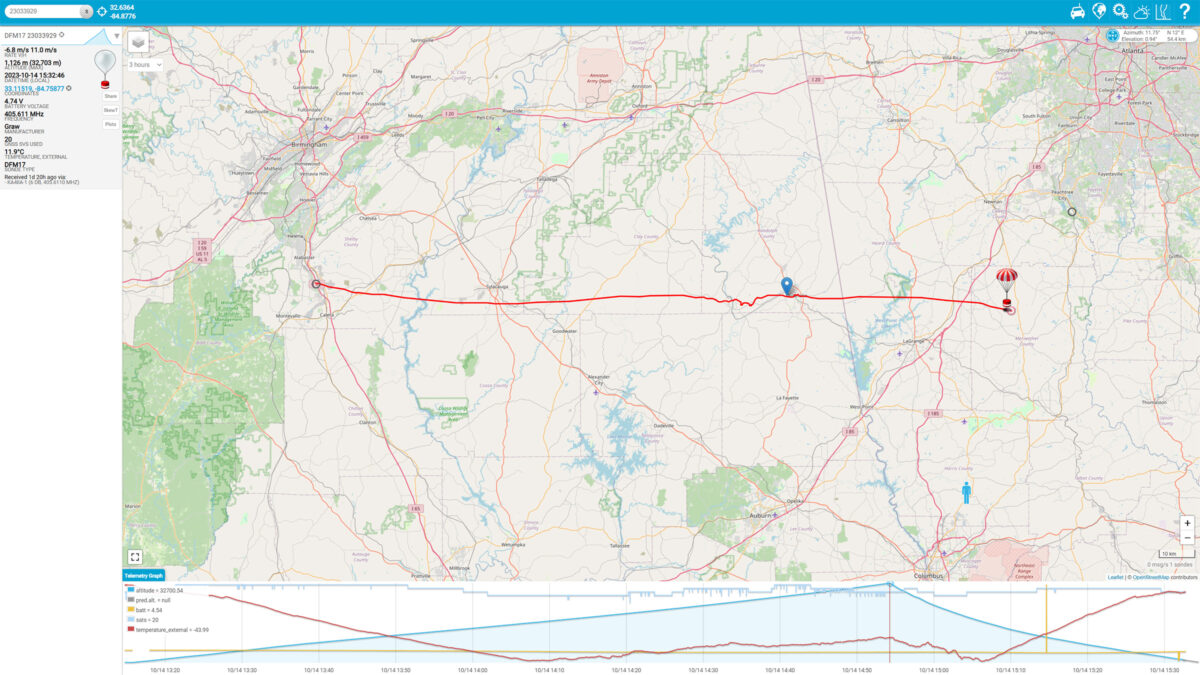
During the tour of the weather office I took a photo (with permission) of the Grawmet radiosonde station with the Skew-T being displayed from the flight.
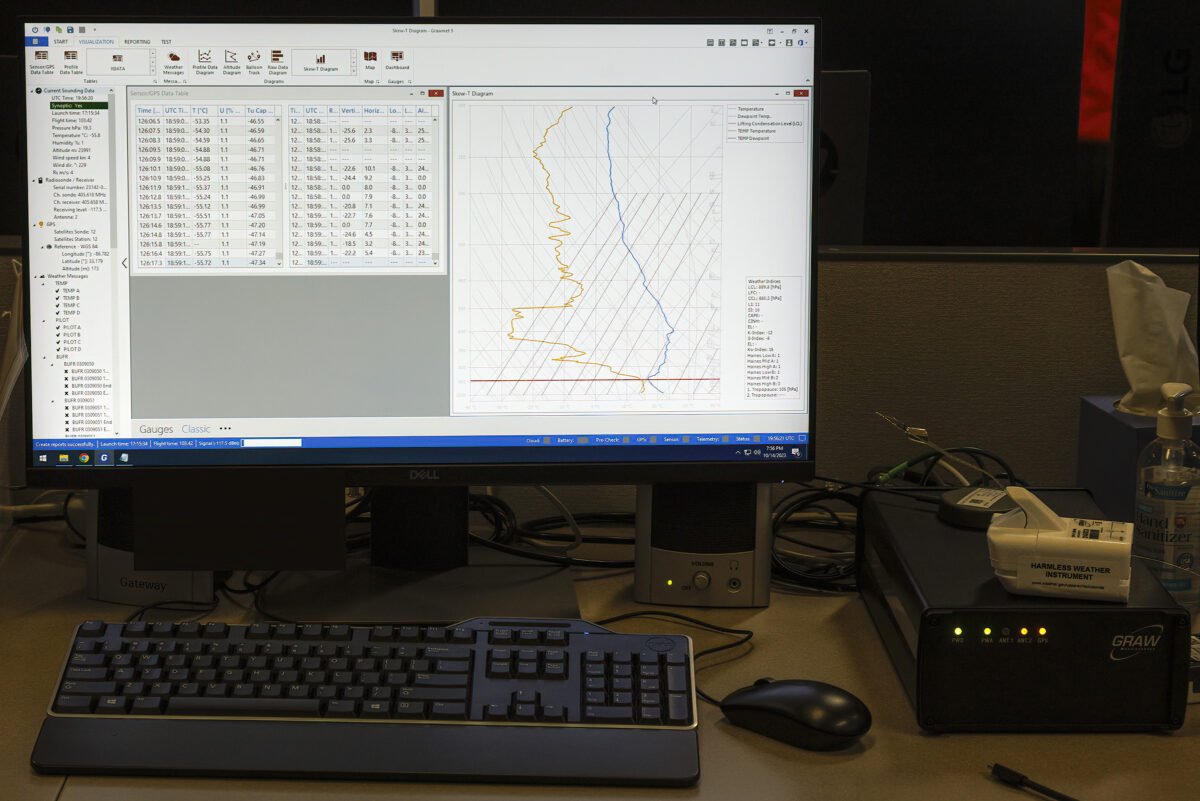
Here’s the data from the flight compiled into the NWS sounding analysis:
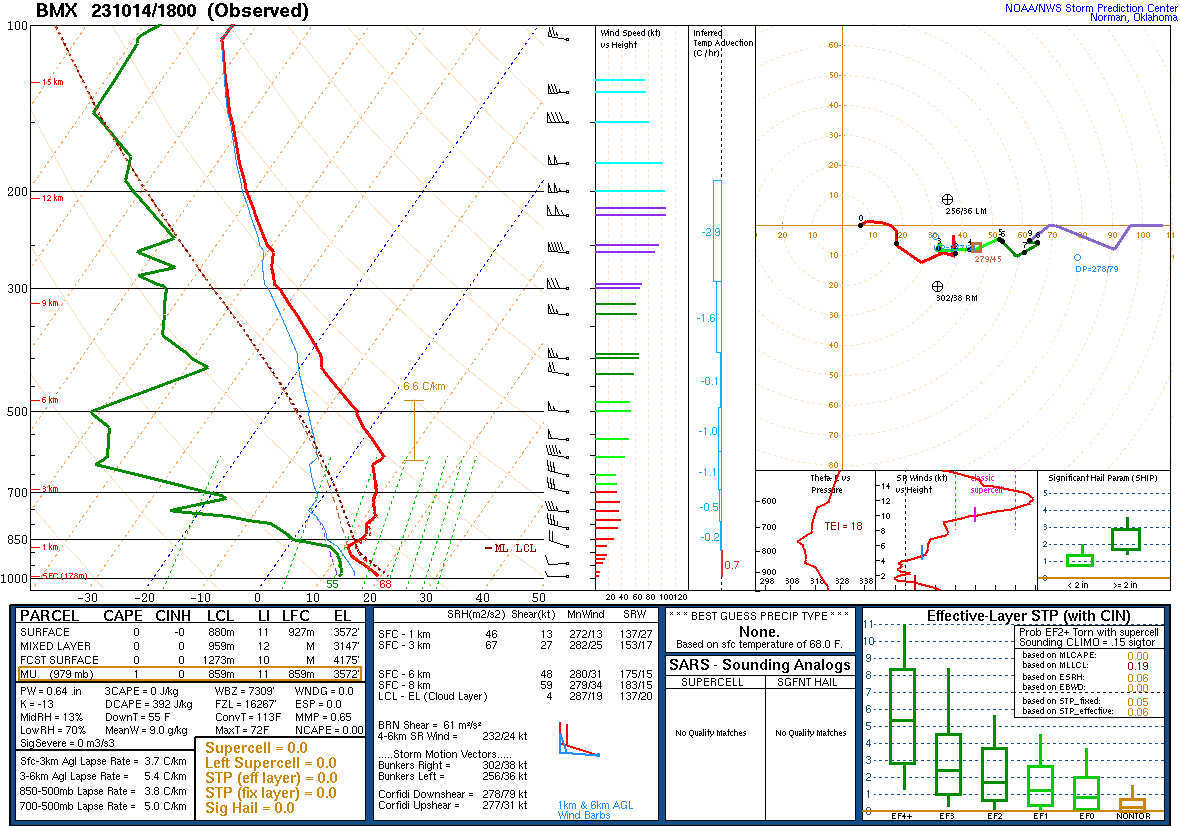
The Next Eclipse
On 8 April 2024 a total solar eclipse will cross the United States from Texas to Maine. In Harris County it will be a partial eclipse with around 80% coverage.
